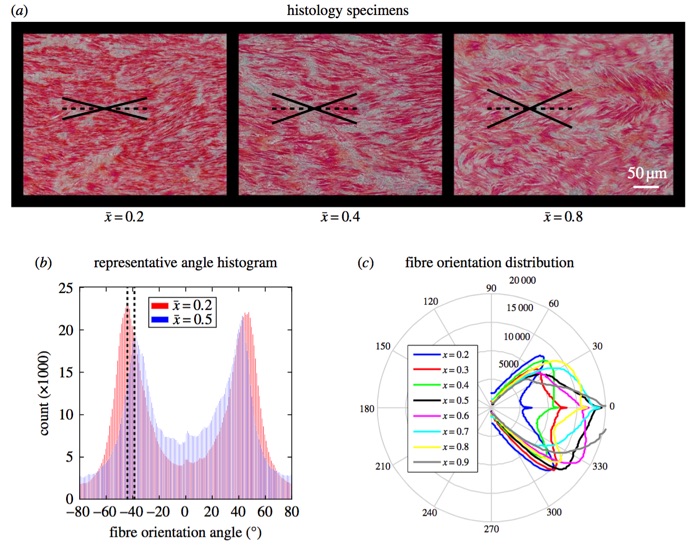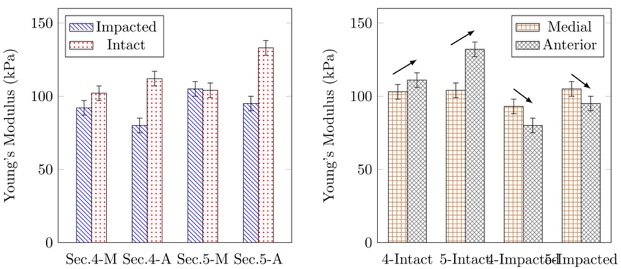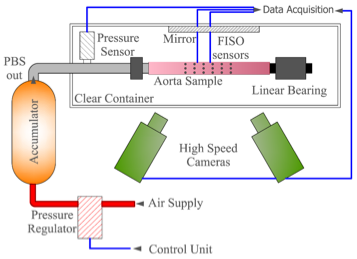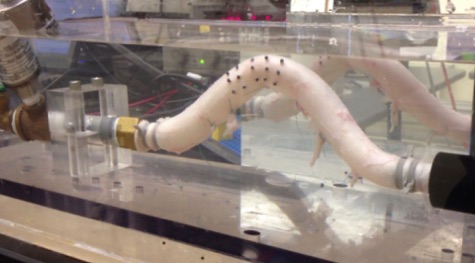Stroke and cerebrovascular modeling
Automatic subject-specific extraction of cerebrovasculature |


|
Summary: The goal of this study is to understand the effects of stroke on cerebral hemodynamics and to predict tissue viability in Stroke patients. We extract the patient specific geometry of the cerebral vascular network from CTA and MRA scans using image processing methods to obtain the 3D vessel volume. We also study the hemodynamics of cerebral vasculature using a computational model of the blood flow and perform comparisons with medical imaging measurements using 4D flow MRI and Transcranial Doppler Ultrasound. We then use novel machine learning techniques to extract predictive metrics from these patterns in clinical severity and risk assessment studies. |
Cerebral hemodynamics and deep machine learning |

|
Summary: The objective of this proposal is to develop a non-invasive diagnostic tool for early detection of cerebral arterial vasospasm that combines routine clinical imaging and deep machine learning for improved diagnosis. Cerebral vasospasm (CVS) is a common (over 70%) and disabling consequence of non-traumatic subarachnoid hemorrhage (SAH). |
Energy-based local material characterization of canine aorta |

|
Summary: This study aims at determining the in vitro anisotropic mechanical behavior of canine aortic tissue and its spatial variations along the axis of the vessel. Eight canine aortas were acquired to harvest circumferential and longitudinal specimens at various distal locations along the aorta’s axis. A constitutive model was developed that incorporates both phenomenological and structural elements to account for macroscopic and microstructural behavior of the tissue based on the findings of uniaxial cyclic tensile testing and histological examinations.The findings showed significant changes in mechanical behavior of the tissue as a function of axial position. The nonlinear constitutive modeling provided good fits to the experimental data and indicated regional changes in material behavior. The constitutive models can be readily used to design computational models of tissue deformation during phenomenological loading cycles. The findings of this study extend the understanding of local mechanical properties that could lead to region-specific diagnostics and treatment of arterial diseases. |
Dynamic bending of aorta: mechanism for aortic dissection |


|
Summary: This study investigates the response of aorta to traumatic loading experienced in automotive accident. Aorta rupture is the second leading cause of fatality in car accidents and it is believed that non-fatal injuries may also lead to long-term cardiovascular disorders in many accident survivors. The goal of this study is to characterize the biomechanical behavior of aorta in the case of partial failure. The hypothesis of this study is that partial aortic failure occurs when local strain and strain-rate in the tissue exceed certain threshold, which may lead to a reduction in aorta wall strength. We define a criterion for partial failure, named Partial Failure Criterion (PFC) to quantify the extent of injury. As shown in Figure 1, we propose that there exists a corridor of strain and strain rate, in which there is a significant reduction in the strength of aortic tissue. The upper limit of this corridor, which coincides with total rupture (Traumatic Aortic Rupture or TAR), constitutes of about 10,000 cases per year (Richens et al., 2002). Based on the number of severe car accidents that is in the range of a few hundred thousand cases per year, we expect that this corridor includes about at least 100,000 cases per year. Therefore, characterization of this corridor, which we call Acute Aortic Disorder (AAD), will be a significant contribution to the assessment of aortic disorders due to trauma. The long term effects of AAD can be two-fold: a) growth of partial failure over time and spontaneous rupture, and b) susceptibility to rupture due to a subcritical loading in the future. |
Constitutive model for aortic tissue under oscillating pressure |

|
Summary: Understanding the mechanical behavior of aorta under supra-physiological loadings is an important aspect of modeling tissue behavior in various applications that involve large deformation. Utilizing inflation-extension experiments, the mechanical behavior of porcine descending thoracic aortic segments under physiological and supra-physiological intraluminal pressures was investigated. The pressure was changed in the range of 0-70 kPa and the deformation of the segment was determined in 3D using a custom-made motion capture system. An orthotropic Fung-type constitutive model was characterized by implementing a novel computationally efficient framework that ensured material stability for numerical simulations. The nonlinear rising trend of circumferential stretch ratio from outer toward inner wall was significantly increased at higher pressures. The increase in from physiological pressure (13 kPa) to 70 kPa was 13% at the outer wall and 22% at the inner wall while in this pressure range, the longitudinal stretch ratio increased 20%. A significant nonlinearity in the material behavior was observed as in the same pressure range, the circumferential and longitudinal Cauchy stresses at the inner wall were increased 16 and 18 times respectively. The overall constitutive model was verified in several loading paths in the space to confirm its applicability in multi-axial loading conditions. |
Mechanical instability of aorta due to intramural pressure |

|
Summary: Dynamic mechanical instability in aorta due to intraluminal pressure may result in a buckling-type deformation and an increase in the pressure-induced tissue stresses and strains. The stability behavior of thoracic aorta was investigated with two boundary conditions that represented two extreme cases of in vivo constraints. The pinned–pinned boundary condition (PPBC) resulted in a decoupled system of equations while the equa- tions for the clamped–clamped boundary condition (CCBC) were coupled. The stability regions around a physiological reference point were generated and the effects of variations in loading and geometric parameters were studied. In CCBC, the critical intraluminal pressures were higher by a factor of two to four compared to PPBC. The highest critical pressures remained below the peak aortic pressures that occur in motor vehicle acci- dents, which confirmed that mechanical instability can be a mechanism contributing to traumatic injury and rupture of aorta. |